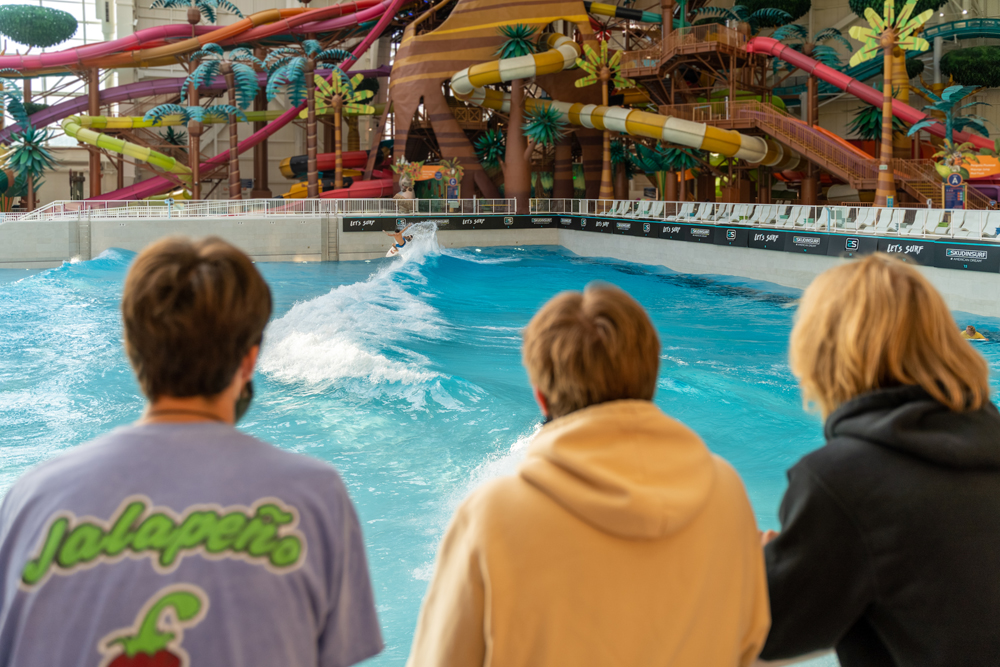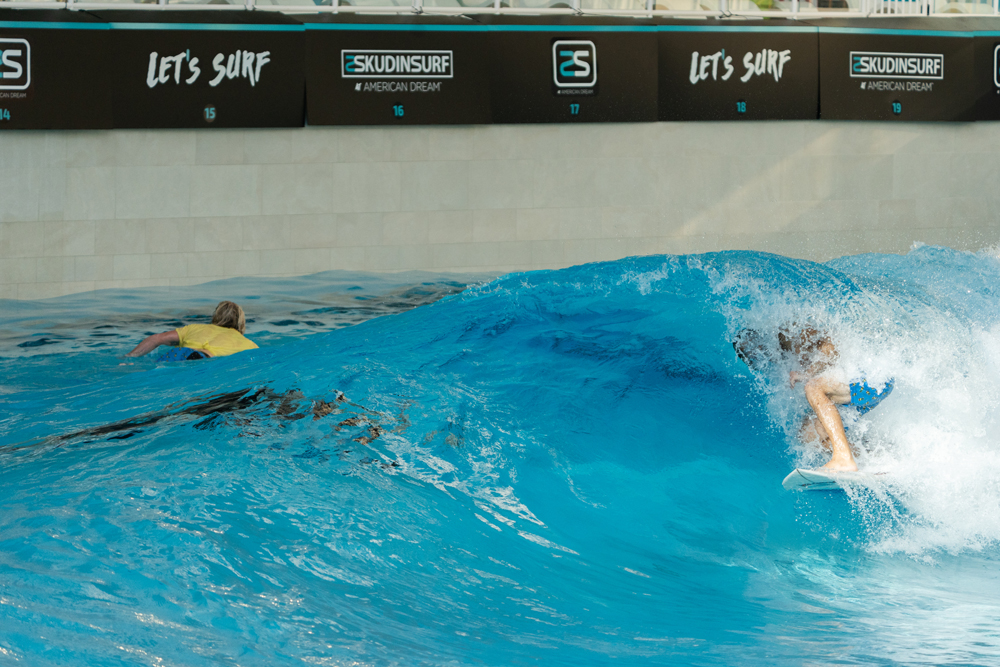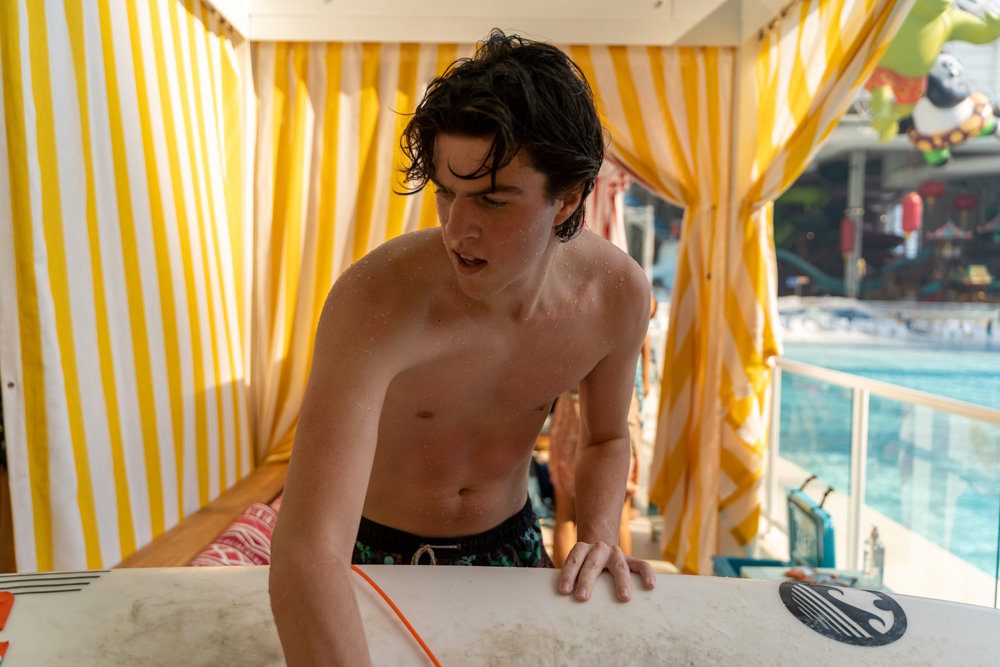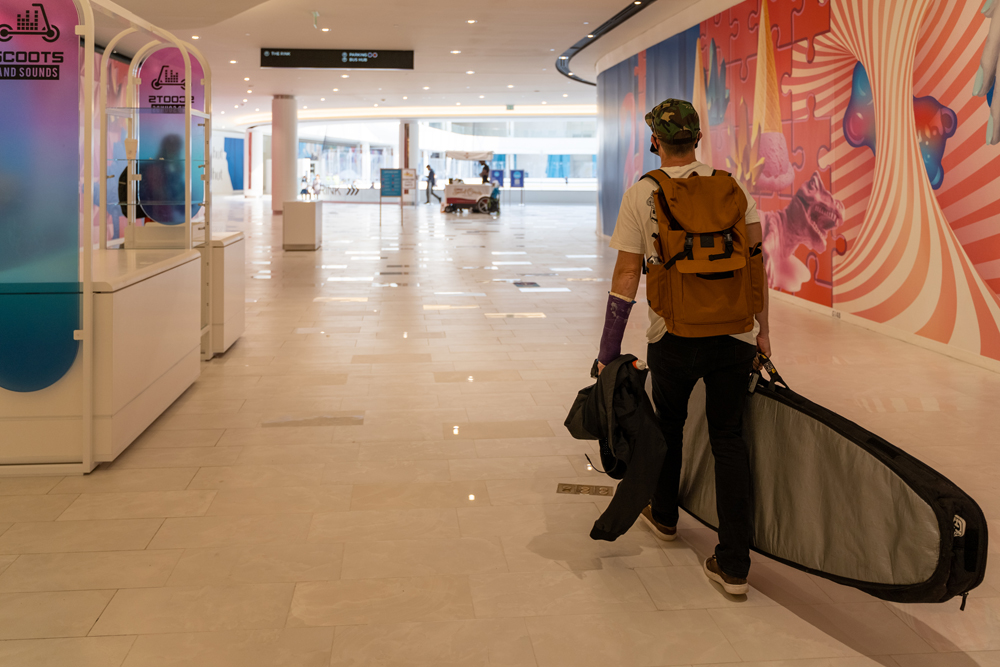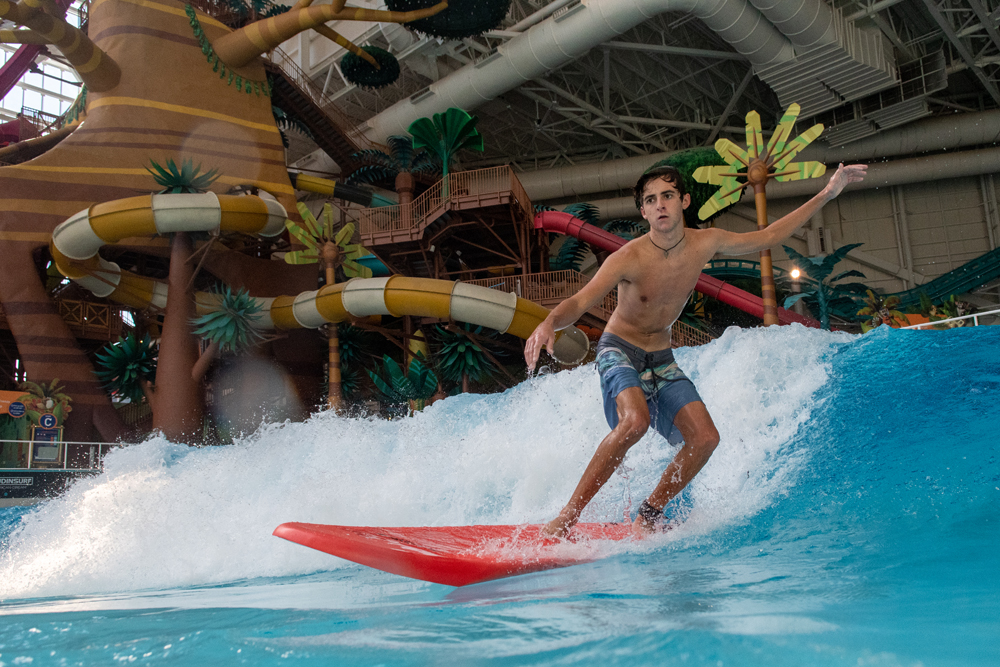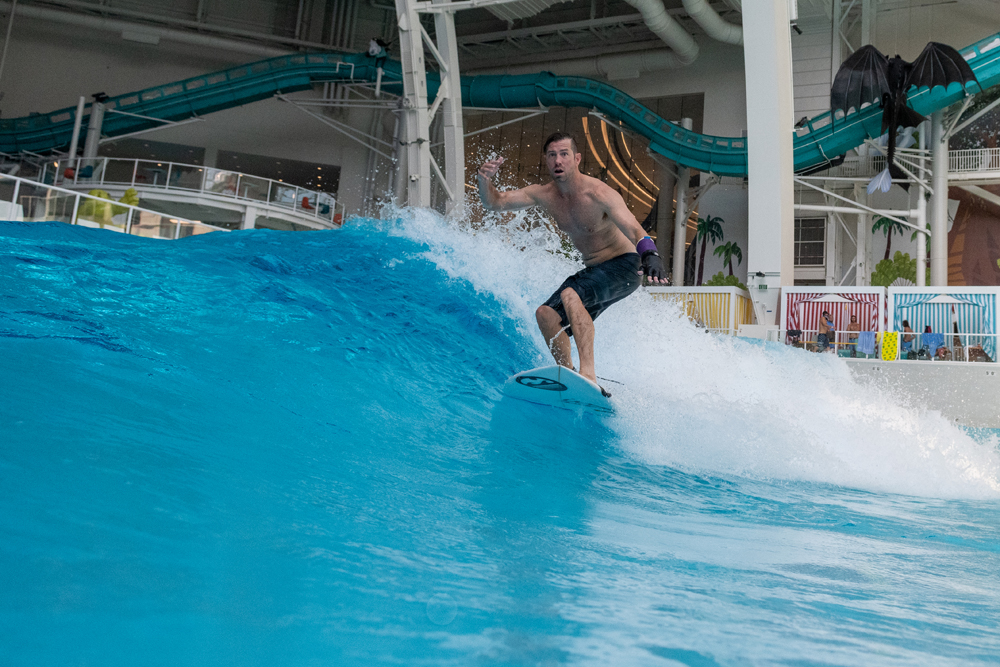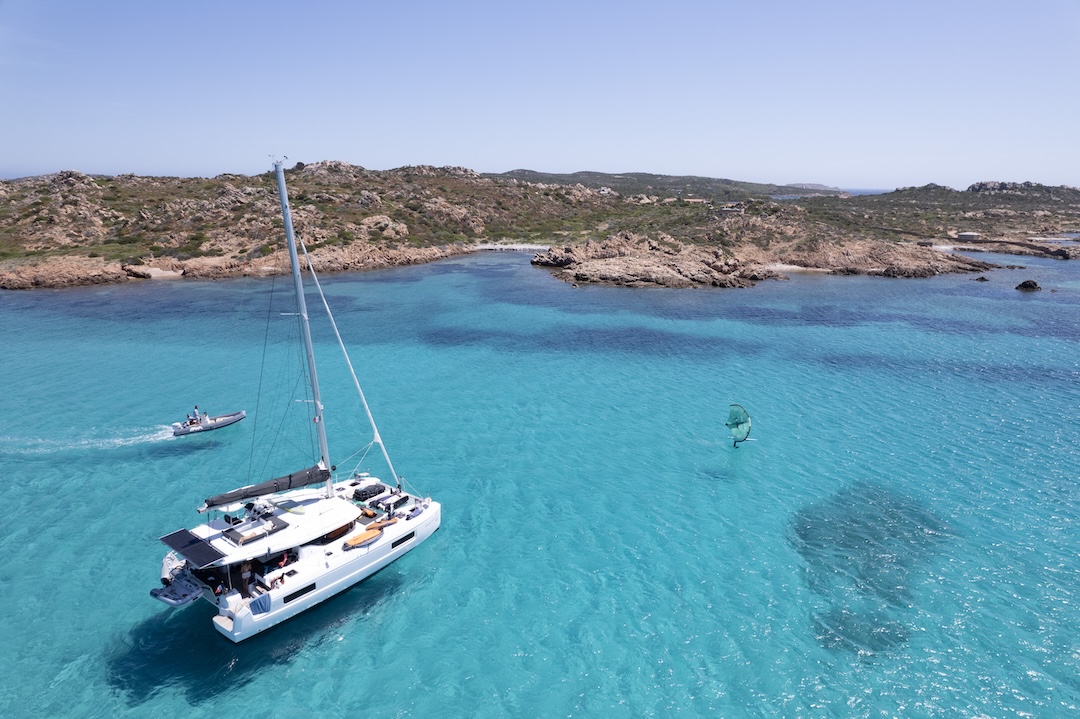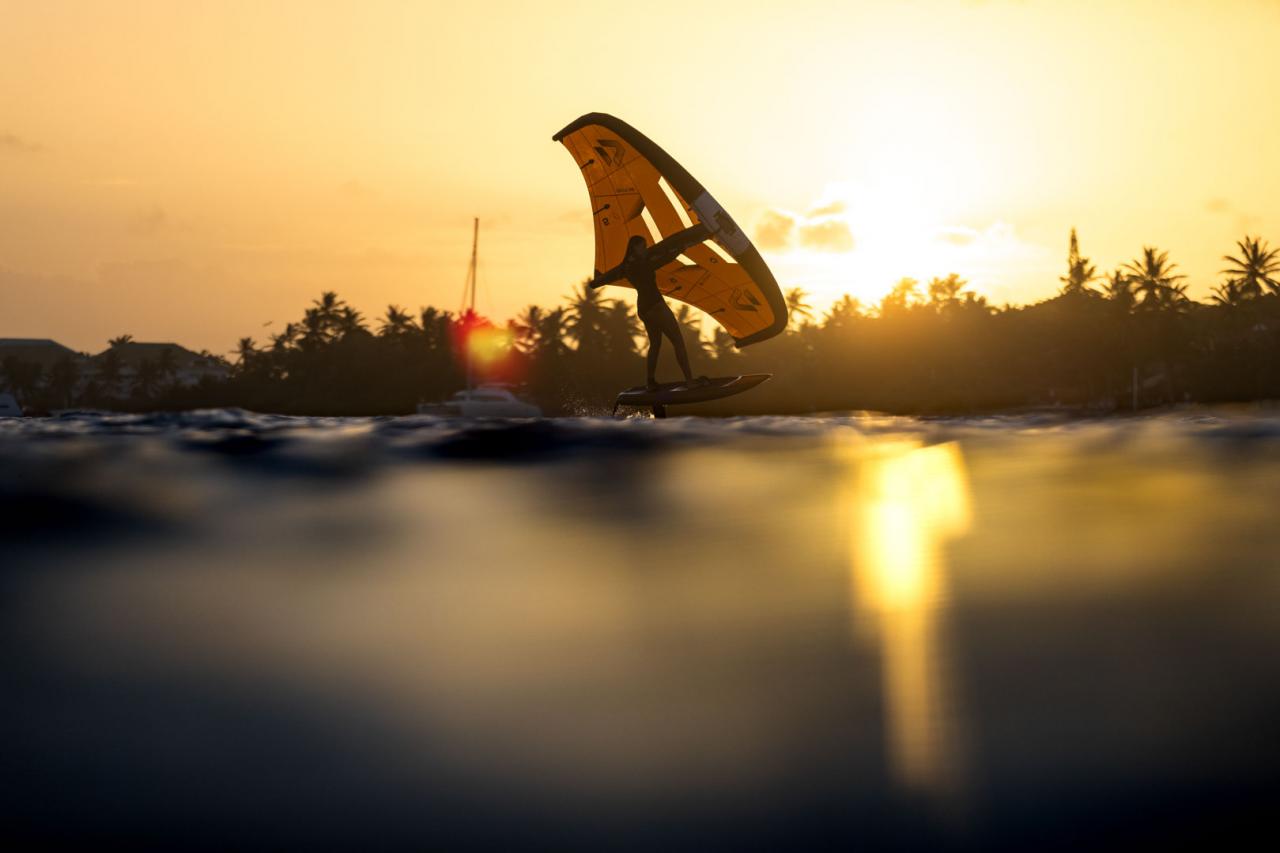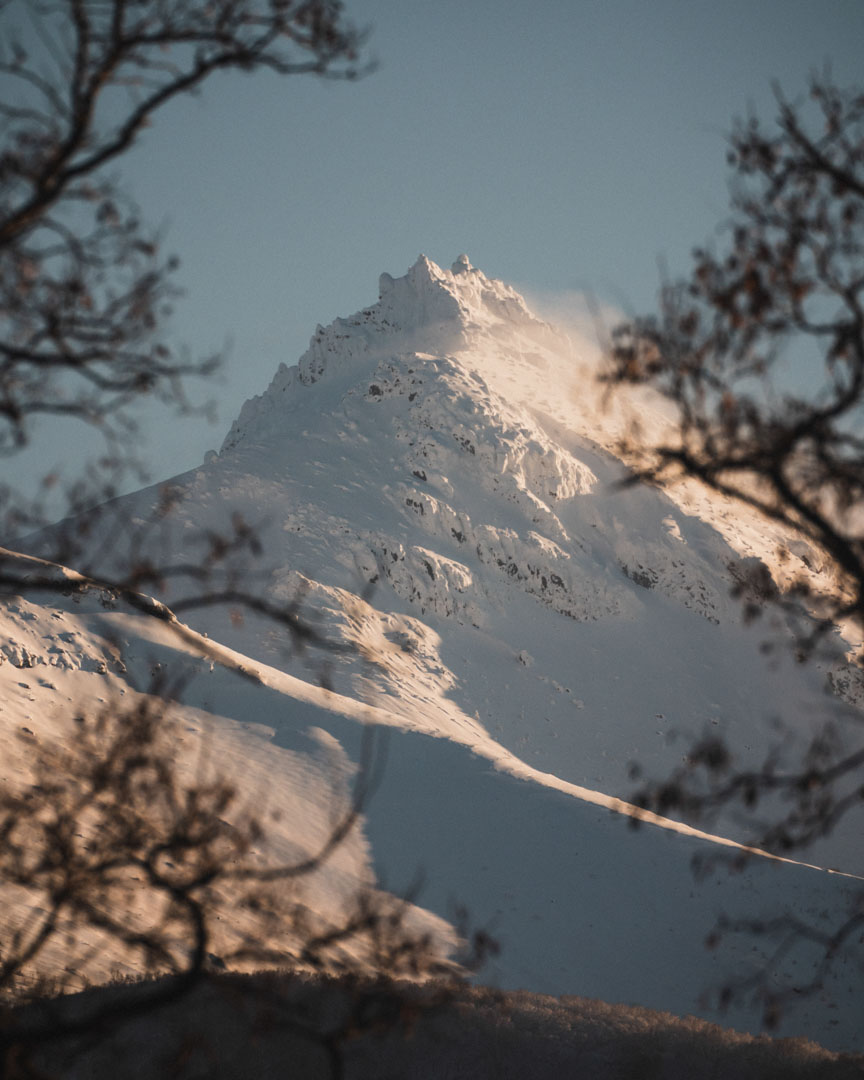Let's face it. We've all dreamed of having a wave pool in our backyard and for approximately 9.5 million of you, that dream has finally become real. The American Dream mall in East Rutherford, New Jersey just completed construction on an 8-year long development project that is hosting the latest installation of American Wave Machine's PerfectWave® technology.
The American Dream project started in 2012 directly adjacent to the MetLife stadium - home of the New York Giants and Jets NFL football teams. The mall itself is absolutely massive with more than 3 million square feet of retail space, an indoor ski/snowboard hill, and a 1.5 million gallon indoor wave pool - the largest in the world. Before you start thinking that we'll soon see a pool in every state, keep in mind that at present there are only ten active wave pools in the world and only two in the United States.
So how do you go about building a wave pool? The biggest question to ask after nailing down your business plan is to decide which technology to use. Surface wave pools generate waves through water displacement and more closely resemble natural ocean waves. Standing waves on the other hand are created by forcing water up and over a physical object creating a stationary wave similar to river waves. There are currently two big players in the surface wave space - Wave Garden and American Wave Machines. Both companies have equal amounts of market share in the industry and can be installed indoor or outdoor, but their underlying technologies are radically different.
Wave Garden uses a wave foil system that moves through the water on a cable displacing water to create the wave. The former NLand Water Park in Austin, Texas was the first pool in the US to use Wave Garden's Lagoon system. The wave foil runs along the center spine of the pool creating right-breaking waves on one side and lefts on the other. Each ride lasts about 15 to 35 seconds which would be memorable to any surfer finding a comparable ride on an open ocean wave. The Lagoon system is able to generate up to 60 waves per hour at a height of approximately 4 to 6 feet. The WSL bought the NLand Park in 2019 and closed it shortly afterwards in order to upgrade the technology to the system currently used by the Kelly Slater Wave Pool Company.
American Wave Machines (AWM) based out of Solana Beach, CA is the other major player pumping out machine-made surface waves. AWM used a different approach all together using an air-pressure system to displace the water at specifically timed intervals capable of producing point breaks, beach breaks, air sections, and peeling waves ranging in size from three to eight feet. The biggest advantage to the AWM system is variability. The pumps that generate the waves are software driven giving operators an infinite number of variables to play with in order to create any wave they'd like. Operators can pre-program a menu of different options from A-frames, to air sections, to barrels, to long peeling lefts and rights. The first public wave pool powered by AWM is the BSR Surf Resort, in Waco, Texas where each ride can last anywhere between 10 to 15 seconds.
New York based professional surfer, Rob Kelly, teamed up with AWM in 2012 when they invited him up to Nashua, New Hampshire to test their latest standing wave installation. Shortly after that trip, the plans for the American Dream project were underway and Rob would become the "test pilot" for all future AWM installs. Rob's friend and WSL Big Wave surfer, Will Skudin, learned about the project through a mutual friend and immediately saw its year-round potential. In the summer months, Will and his brothers run Skudin Surf camps in eastern Long Island - the largest surf camp in the country by participation.
Will saw an opportunity to continue teaching, coaching, and mentoring surfers through the winter with the use of the American Dream pool. So, he contacted the developers and struck a deal. Skudin Surf now has exclusive use of the pool for six hours a day to pump out waves from a literal menu of options they helped to create. Will and his team worked closely with the AWM engineers to pre-program the types of waves they offer. For beginners, there's the "Party Wave'' which is perfect for learning to catch your first wave on your own. As you progress you can choose from the A-Frame options like "The Classic", "Gotham", or "Bonnie and Clyde". Each of the A-frame waves allow for simultaneous take offs with one rider going right and another on the left. Slight variations in the steepness of the wave, the length of the open face, and the presence or absence of an air section add to the variability. For athletes who are really progressing, there's the "Vortex". This wave creates an under the lip barrel designed for behind the lip take offs followed by immediate cover ups for surfers looking dial in their tube time.
A small group of us planned a trip to Puerto Rico together and built a long layover into our itinerary going through Newark airport. We scheduled just enough time to hop over to American Dream to sample the goods prior to its official public opening in early October. Will and his team scheduled us to come during his media week which ran the gamut from New York Times writers to Saturday Night Live stand up comedians to local influencers like Ben Gravy. Knowing we were all big Gravy fans, Will slid us into the schedule so that we could share a few waves with the legendary vlogger himself.
The operator for your AWM session acts as your DJ reading the crowd and making minor software adjustments on the fly to maximize the fun factor. Small adjustments in wave pitch and height can add or remove half seconds of response time giving riders the ideal conditions based on their experience. Will started us off with a few warm up rides to loosen us up. The first thing you notice is the timing of each wave and the lack of buoyancy in the freshwater. In a natural ocean environment, you're reading the horizon, watching for set waves, and adjusting your positioning with plenty of time to get in sync before you begin paddling. In the case of artificial waves, your reaction time has to be a lot quicker. Sitting against the back wall of the pool, the first movement from the water is downward as the air pressure systems below you draw the water into the pumps then project it back to the surface in the form of a wave. Fortunately there are two very experienced coaches in the water with you to prepare you for what's to come and help you gauge your positioning and timing. "Ok, get ready here it comes. Ok, start paddling now!".
It took our group one or two tries to nail the timing, but once we did, it was magical. The sheer entertainment factor of being in a pool with eight of your closest friends catching an endless number of waves brought smiles and cheers from all of us. We had formed a literal merry-go-round on each side of the A-frame with regular footers on one side and goofys on the other. Watching your buddies catch waves as you paddle back out through the channel was as much fun as riding them.
"Hey you guys wanna change things up?" Will was on his headset playing his DJ role supplying our inspirational background music over the house speakers while prompting us to dabble in every offering on the menu. "Yeah, ok let's try something else."
We moved through the menu experiencing all the nuances of what the AWM PerfectSwell® system was capable of producing. We all had our favorites and we quickly found the areas where we needed some practice. Skudin Surf excels in what Will calls the middle areas of progression. Surfers looking to go from beginner to intermediate or intermediate to advanced work with instructors to punch through plateaus to find their next level of surfing. Wave pools have given surf instructors the perfect tool kit for progression. No more variables or waiting for waves. Instead wave machines can crank out the same wave each and every time and they can do it day or night 24 hours a day, 7 days a week.
So what is the future of wave pools? There are plenty of skeptics and supporters on both sides of that question. Ultimately it comes down to the types of users. For the beginner, the wave pool offers a non-threatening uber convenient way to get introduced to the sport and progress to a level that gives them the confidence to get in the ocean. Intermediate surfers will benefit from the efficiencies of catching more waves in less time leading to faster progression through more ride time. All you advanced and pro riders will break down maneuvers to a granular level repeating the moves and timing until they're baked into your permanent muscle memory.
Regardless of where you stand on the debate, we all agree that the level of surfing will grow exponentially as more wave pools come online. And where will our next WSL world champion come from? Wave pools have certainly extended the opportunity to learn to surf to those who don't necessarily live near the coast. Could we see a professional emerge from wave pool upbringing? There's certainly no comparison to the real thing, but with the number of new installations on the rise, it's clear that the wave of change is on the horizon and rider participation and acceptance will control the outcome.
For more information about Skudin Surf and the American Dream wave pool experience, visit skudinsurfamericandream.com.

